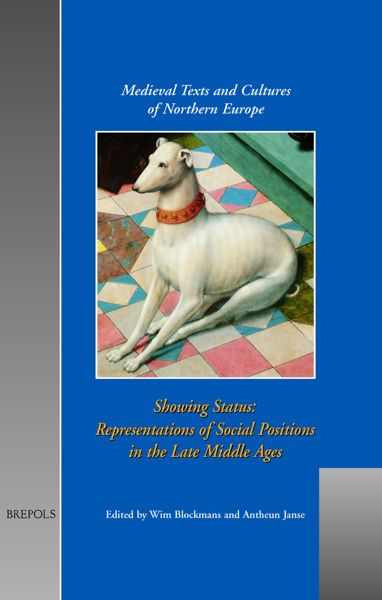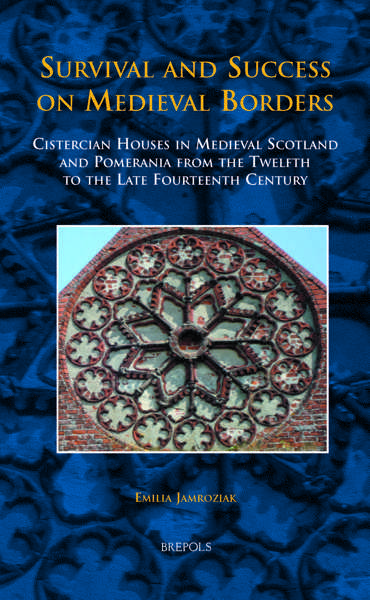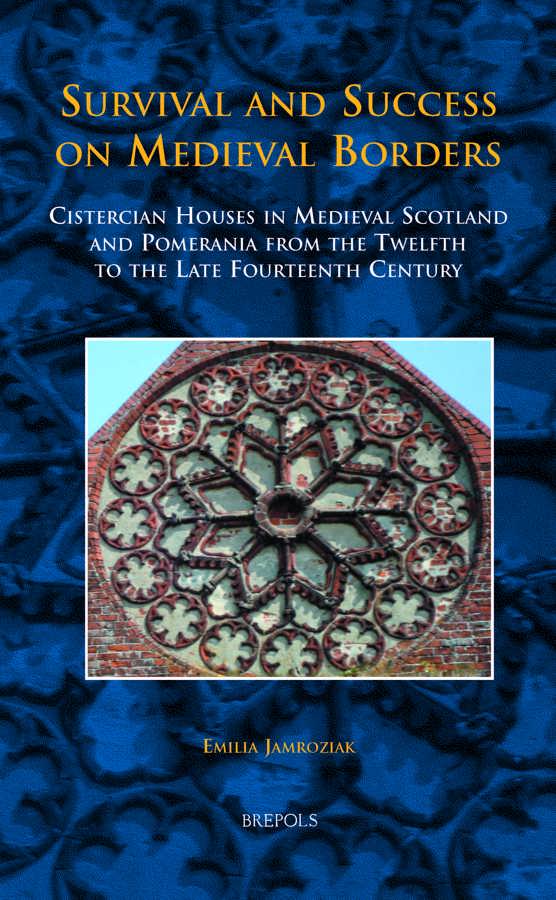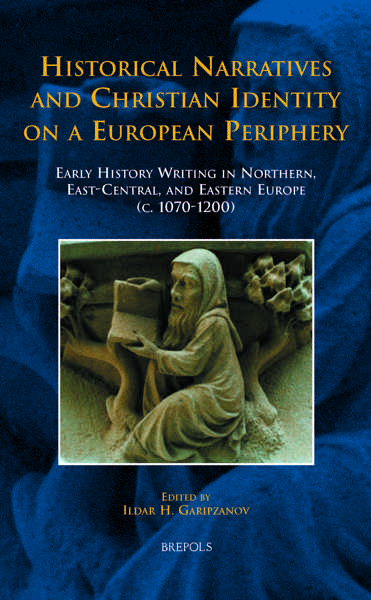
Survival and Success on Medieval Borders
Cistercian Houses in Medieval Scotland and Pomerania from the Twelfth to the Late Fourteenth Century
Emilia Jamroziak
- Pages: 215 p.
- Size:156 x 234 mm
- Illustrations:2 tables b/w.
- Language(s):English
- Publication Year:2011
- € 85,00 EXCL. VAT RETAIL PRICE
- ISBN: 978-2-503-53307-0
- Hardback
- Temporarily Out of Stock
- € 85,00 EXCL. VAT RETAIL PRICE
- ISBN: 978-2-503-56159-2
- E-book
- Available
"All these qualities contribute to commend Jamroziak's book. (...) Jamroziak's book can be considered as a first step towards progress in several important research fields, such as Cistercians and frontiers, but also white monks and nuns around the Baltic, the Northern and the Irish Seas, or abbots in the Anglo-Norman world." (Alexis J. Grélois, in: The Medieval Review, 12.05.22)
"Overall, this is an important and useful book. It is clearly organized, cogently written, and opens to an English-reading audience a great deal of Eastern European scholarship (much in Polish and Czech) that will suggest fruitful new avenues of research." (Anne E. Lester, in: Speculum, 90/3, 2015, p. 827-829)
« (…) une œuvre très impressionnante, qui mène une étude comparative fascinante de deux régions qui, malgré la distance qui les sépare, partagent de nombreux points communs. Les similarités et les différences que E. Jamroziak a identifiées sont d’un très grand intérêt et deviendront sans aucun doute des points de référence pour les études futures. » (Nicolas Morton, dans Cahiers de civilisation médiévale, 57, 2014, p. 486)
This comparative study analyses Cistercian strategies on the northern and north-eastern frontiers of medieval Europe. Through case studies of six houses in Pomerania and Neumark (Kołbacz, Marienwalde, and Himmelstädt) and on the Scottish-English border (Melrose, Dundrennan, and Holm Cultram), the author traces the development of social networks around these monasteries within their own regions and across borders, and explores the importance of the international Cistercian networks for communities located in these politically sensitive areas. Very different socio-economic conditions in the regions under discussion resulted in quite different strategies of land accumulation by Cistercian monasteries in Scotland and Pomerania, which in turn had a lasting impact on their relationships with their neighbours. The author also examines the role of these abbeys in wider ecclesiastical politics and in relation to the key issues of the time: church reform and the expectations of the order’s lay patrons and benefactors. In the fourteenth century, all of the abbeys experienced war, violence, and long-term instability. Their responses to these threats and difficulties are significant for our understanding of monastic strategies in hostile environments. Above all, this study shows how a Cistercian model was adapted to fit the complex political, cultural, and ethnic contexts of the southern Baltic, Northern England, and Scotland.
Dr. Emilia Jamroziak is Senior Lecturer in Medieval History at the University of Leeds and a fellow of the Royal Historical Society. Her research focusses on the interactions between religious institutions, especially Cistercian monasteries and the laity from the early twelfth to the late fourteenth century.
List of Illustrations
Acknowledgments
List of Abbreviations
Place-name Concordance
Introduction
Chapter 1. Building Support Networks on the Frontiers: Foundations and Founders
Chapter 2. Building Support Networks on the Frontiers: Making and Keeping Benefactors and Friends
Chapter 3. Across the Border: Mother Houses and Why They Mattered
Chapter 4. Bishops: Having Friends in High Places
Chapter 5. When Things Go Wrong: Violence and War
Conclusion
Index




